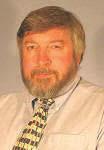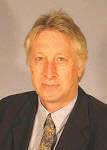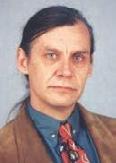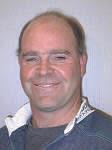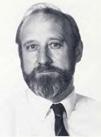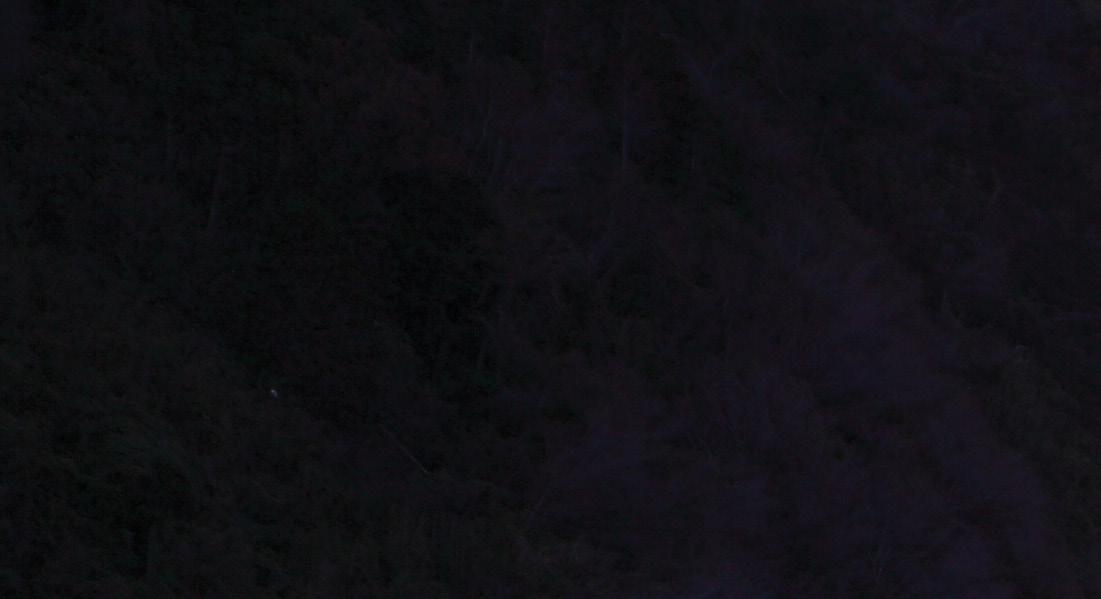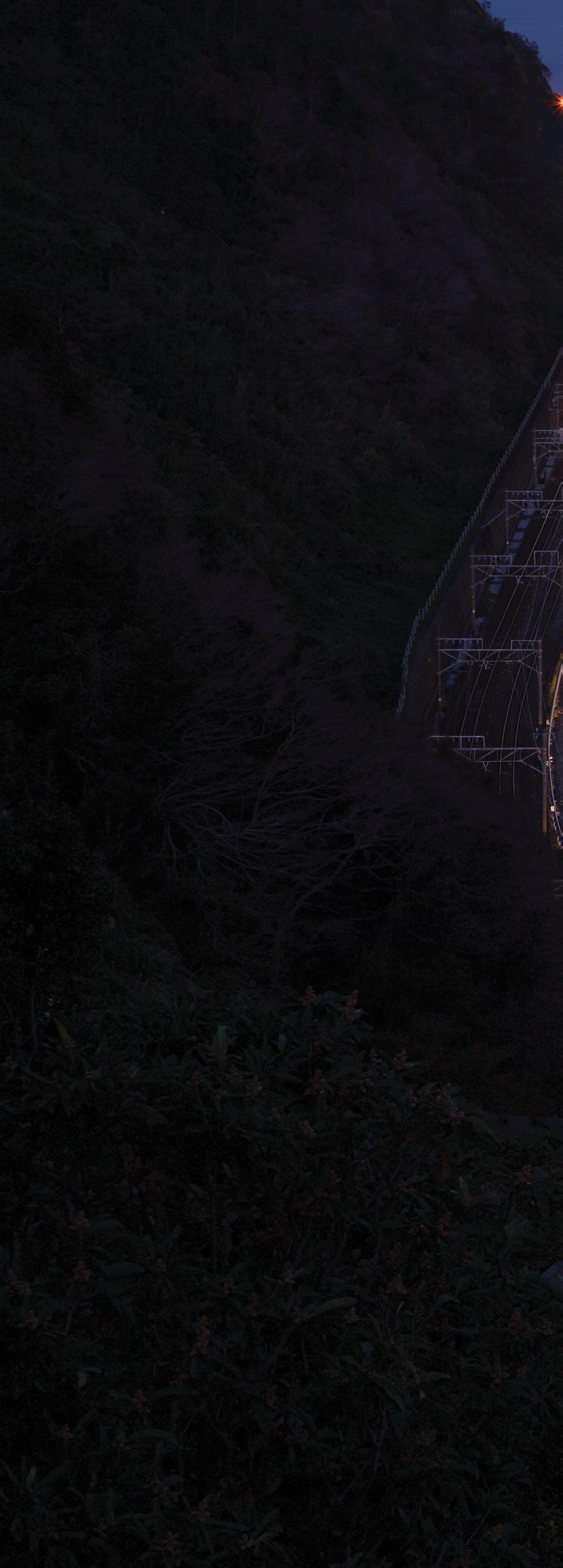JohnMcLean




John Robert McLean





John Robert McLean
ROAD ENGINEER MOUNTAIN CLIMBER FAMILY MAN
Around the middle of last year, Robyn Weir, John McLean’s wife, contacted me. She told me that John had been diagnosed with dementia. She told me that she had decided to prepare a compilation of professional and personal memories of John offered by family, friends and professional colleagues so that John could read it – and appreciate it – while he was still able, and also so that the family could have a permanent record.
Robyn asked me if I would be willing to contact his associates who worked with him at the Australian Road Research Board (ARRB) over many years and to ask them if they would be willing to contribute their thoughts about John from both the personal and professional viewpoints so that I could collate the responses into a single document. I was, of course, more than happy to do so.
What follows is a collation of the responses received (it was quite a drawn-out process!). Only very minor editing has been carried out – mainly a few typos, minor corrections and the deletion of repetition. The responses are presented in no particular order , though some cross-referencing to input provided by others is provided. A small number of those contacted felt that they had not had sufficient contact with John to justify adding anything to what had no doubt already been submitted : naturally, they offered their best wishes . I was unable to contact a few people who I knew worked with John but for whom I had no contact details. A small number did not re spond.
Some of those contacted asked if they could be sent the final document. I contacted everyone seeking their permission to send the final document to everyone who had responded, and everyone was happy with this.
I think it is a fascinating potted history of the company seen through the eyes of many while espousing one.
Kieran Sharp, March 2024
The following biography of John McLean was originally prepared for inclusion in the book ARRB, The First 50 Years, which was published in 20 10. A number of similar biographies were prepared. Owing to an ‘administrative oversight’ (translation: internal stuff -up within ARRB) most of the profiles were not published in the book. As a result, it was agreed that an ARRB ‘Hall of Fame’ would be created, with the profiles loaded onto the ARRB website, though whether the information is still available is un known
I am in the process of updating the ‘50 Year’ book to fix some errors and omissions, and especially to add the photos and profiles that failed to appear in the original book. The book will still end at 2010, except that some photos of ‘abandoned ARRB’ , will be included in an Epilogue.
The title page of the ’50 Year’ book includes the statement: “People say that the unique thing about ARRB is its people. This book attempts to explain why”. I suspect t hat John will find it wryly ironic that, having made that statement, the biographies of key people were omitted when the book was published. I suspect most of you will find it bemusing as well!
John Robert McLean grew up in the, then, outer eastern suburbs of Melbourne. He matriculated from Ringwood High School in 1962 and was awarded a Commonwealth Scholarship. He studied Mechanical Engineering at the University of Melbourne and, after graduatin g with honours, found employment as a design engineer in a defence establishment.
In 1968 John was approached by Professor Peter Joubert to join a largely ARRB -funded research group at the Melbourne University Mechanical Engineering Department investigating the driver -vehicle-road system, thus commencing a career -long association with A RRB.
He was awarded a PhD in 1972 for his application of power spectral density analysis to study driver steering control. This involved test subjects driving an instrumented EH Holden in lanes marked out on a Melbourne Airport runway before it was opened for t raffic.
In the same year John joined the research staff of ARRB as one of a number of young graduates and postgraduates recruited by the Deputy Director, Dr John Metcalf to increase in-house research capability. He was placed in the Traffic Engineering Group, a discipline with at best a tenuous connection to his undergraduate and post-graduate training. John remains grateful for the generous sharing of time a nd knowledge by his Group Leader, the late Jim Cowley, and a number of Road Authority traffic engineers. Following from work with a NAASRA Principal Technical Committee (PTC) Working Group charged with reviewing road design standards in the context of budget constraints, John initiated research aimed at being able to operate two -lane highways at higher volumes than was considered acceptable at the time.
In 1978/79 he spent a year as a Visiting Research Associate at the Institute of Transportation Studies, University of California, Berkeley, where he used the Institute’s library material to review the technical and theoretical underpinning of two-lane highway capacity standards. On returning to ARRB, John encouraged the development of a rural traffic simulation model to study two -lane capacity and worked with younger staff to demonstrate the traffic flow and capacity benefits derived from the provision of overtaking lanes. While John was in the USA he became the first international member of the US Transportation Research Board Committee on Geo metric Design, a position he held until 2000.
In 1983, John was appointed Chief Scientist of the Road Technology Group with primary responsibility for establishing the Accelerated Loading Facility (ALF) pavements research program. This was achieved as a collaborative arrangement between ARRB, NAASRA and indiv idual road authorities.
The reorganization of ARRB in 1988/89 enabled John to move back into the planning and policy areas as head of the Transport Efficiency Program. Here, he initiated and undertook research in road asset management, congestion management, and economic evaluation.
John resigned from ARRB in 2000, took in the Sydney Olympics, and commenced the last ten years of his career as a part-time freelance consultant. He maintained his association with ARRB and some of his work has been undertaken as a sub-contractor to ARRB. He lives with his wife Robyn in Melbourne.
by Al Werner
It was at the annual Transportation Research Board (TRB) meeting in Washington, DC in 1978 while John was at the Institute of Transportation Studies at the University of California Berkeley. The occasion was an unscheduled evening social event for the Institute’s alumni. ‘Door-crashers’ with shared academic interests weren’t turned away. I introduced myself to one the attendees and after a brief exchange of our backgrounds I was met with an exclamation “I have been wanting to meet you!” The evening evolved into a discussion relating to highway capacity, John’s own research work at the time, and my unravelling of ‘Walker’s Method’ for passenger car equivalents for two -lane highways as used in the 1965 Highway Capacity Manual
Subsequently, we met several times, but one meeting that I recall clearly was a ‘drinking activity’ we were engaged in at TRB in 1984. Australia had won the America’s Cup in sailing , the US having won it for the past 132 years. I, being unconversant in sailing, was given an elucidating accounting of the whole event, and most vividly the turning points in the races.
In 1986, my wife, Isabel, and I visited Australia and travelled in a campervan on the highway from Cairns to Melbourne (KGS: Highway 1, Al) . It was at the end of our trip and Isabel was to head back to Canada and I was to head on to Adelaide for the ARRB conference. John and Robyn extended to us their hospitality. We stayed several nights with them. I had to leave a day early by car for Adela ide and John kindly drove Isabel to the airport the next day.
However, I must mention a related incident that sticks in Isabel’s and my mind. Upon arriving in Melbourne I had to return the campervan to the rental agency and Isabel had to do the laundry. We left the afternoon open for shopping in downtown Melbourne. U pon arriving in the shopping areas, we found them deserted –there wasn’t a soul to be seen. We couldn’t even find a person to ask questions. All we could do is ‘window shop’. While returning on the metro(?), we passed a sports stadium and coincidently hea rd a mighty roar from the fans. What’s with this place? In Canada, Saturday is the busiest day of the week.
Upon returning to John and Robyn’s home they explained that Melbourne businesses shut down on Saturday afternoons and the sports minded attend various sports events. It was also related that the empty streets that we had just witnessed were typical of the scenes that were shot in the suburbs of Melbourne for the movie On the Beach made in 1959.
John and Robyn might also remember my concern regarding a traffic ticket that I had received while travelling through the Gold Coast. The misdemeanour was for making a right turn from the outside lane. A somewhat lengthy discussion with the officer ensued about their unclear signing at this Y-intersection. He was courteous and somewhat apologetic – “I have to issue you a ticket. My supervisor is back there in the car.” And so there he was in my mirror – an older guy sitting in the passenger seat rather pomp ously. To me this seemed serious as it required me to make an appearance at some sort of court venue. John and Robyn expressed some ‘views’ about the New South Wales police and their general treatment of drivers of out - ofstate vehicles. Their advice was “Don’t worry about it. Their ticketing system will never catch up to you.” That’s my recollection of the incident, but most importantly to me was the sense of relief that John and Robyn gave me at the time.
Our visit to Australia is fondly remembered and in particular our short stay in Melbourne. Isabel and I will always remember and cherish John and Robyn’s genuine friendship and their hospitality.
PETER SWEATMAN
John’s pièce de résistance was definitely his performance of The Bastard from the Bush , which he recited violently every year at the Truckin’ and Pickin’ BBQ. These annual cultural events were hosted in alternation by myself and Rod George. He also liked the opportunity to vocalise on a couple of his favourites: Me and Bobby McGee, and Hey Jude.
I recall his time in Berkeley having a big effect on him. He seemed to mention BART (Bay Area Rapid Transport) quite frequently but I was never sure whether he loved it or hated it. In his mind, ARRB constituted a Protestant-Catholic, East-West Berlin, division of Hard and Soft. No need to explain which side of the wall he was on. He wasn’t that interested in origin -destination surveys.
His views on transport planning boiled down to: “Just get a Melways and a Texta”!
I’m pretty sure I first met him in the mezzanine office of the Engines Lab at the University of Melbourne Mechanical Engineering department. He had started his PhD before me, but we were both in that office for a few years. He had strong views on what made a good dissertation. He believed you needed a ‘Chapter 7’ that pontificated on the somewhat individual studies presented in the earlier ch apters. I followed suit on the Chapter 7 rule.
Also in that office was a bloke called Ken Rolls and a couple of others. Professor Peter Numa Joubert would suddenly appear out of nowhere and rudely awaken Ken Rolls. I think Errol Hoffmann was John’s supervisor. In all of this, John and I were under the guidance of the technician Derek Jacquest , and we were both dependent on Derek’s mysterious contacts in the Engineering Workshop. Derek was straight out of a British Ealing factory worker comedy and provided an effective conduit for ‘foreigners’ going thro ugh the workshop. He also knew about the huge attic above the machine shop, and I recall John and I getting access to various treasures. I got an ancient ridge pole -style tent and enough tongue and groove pine to do the ceilings of my terrace house in North Carlton.
To say John liked camping is like saying the Beatles played a few pub gigs. He was a regular at a blue -collar resort on the south coast of NSW – Tathra. No-one from Sydney would be seen dead holidaying anywhere to the south of Sydney, so the place was wide open for Victorians. As I recall, the ridge pole of my prized tent finally fractured in the Tathra Municipal campground under the weight of ancient, highly -absorbent canvas.
Anyway, back at the Uni, John’s experiments on the pristine taxiway concrete at Tullamarine Airport required traffic cones – lots of them. John and Derek came up with the idea of using lots of squat plastic water bottles which were sprayed with fluoro paint in various colours. [This was WELL before Hi -Viz became de rigueur all over Melbourne (Ugh)]. It was then necessary to purchase a very large and incredibly sturdy tandem trailer to cart several tons of water between Parkville and Tullamarine. Now we had something very useful in the form of the trailer, and it was the backbone of many renovation projects at our respective North Carlton houses.
Friday nights were Prince Alfred nights. We’d head to the pub across Grattan St and get pissed enough to eventually feel like eating dim sims and/or chicken cho w me in before closing time rolled around. After 10, we’d stagger off on the quite long walk to North Carlton – across College Crescent, up Rathdowne St, etc. I remember one time we climbed a tree somewhere along the way and incurred a little damage.
John was noted for his ‘ outdoorsy ’ activities, especially rock climbing. He was always heading to ‘Arapiles’ for the weekend. On one, and only one, occasion I went along and he helped me do a climb called The Siren , I believe. I must say I felt a bit like a Greek God when we came back down, but never did it again. I think he was the only person I knew who actually drove a VW Combi – and had kids.
John was a St Kilda barracker long before it was fashionable (is it fashionable now?). One of his footie stories he told with great glee. At the time, St Kilda were the junk yard dog of the competition. For example, he was very proud that they turned on th e sprinklers at the Junction Oval for a good soaking before big games – a real leveller. If St Kilda were the Toyota Corolla of the competition, Carlton were the Jaguar. Carlton had a large ruckman by the name of John Nichols who had (allegedly) spent a little jail time for some white collar crime. In those days, the outer at Princes Park was a real social melting pot where everyone drank enough large steel cans to create a little vantage point to stand on. As they bounced the ball in the centre, and the ruckmen circled, John would scream “COME ON THE BANK ROBBER”. Etc. (Kieran has another St Kilda story.)
Give my regards to the Old Bugger. Great memories once you get started!

Peter
Sweatman
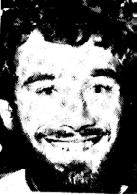
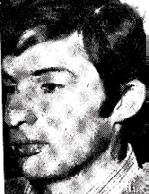
John McLean and Peter Sweatman: photos taken during the final year of their Mech. Eng. degree and published in the Melbourne University Engineer ing Students Club magazine “Cranks & Nuts”. It no longer exists.
MAX LAY
John was one of a small group of exceptionally talented engineers to undertake a PhD program under Peter Joubert at Melbourne University. They made many important contributions to the world’s knowledge for driver and vehicle behaviour in real -life situations. John was a leading member of this group and throughout his career made major contributions to the world’s understand of modern traffic in real -time situations. His work on driver steering and speeding greatly impacted road design standards, traffic con trol procedures and road safety in real -world situations.

A major impact was on the geometric standards used in road design around the world. Later in his career John made a major and successful intellectual jump into road pavement technology. In retrospect, his has been a very fruitful life in his chosen technological fields. Like many gifted people John sometimes found bureaucratic decisions difficult to accept but he never let this impact on his intellectual productivity.
Max Lay
JOHN METCALF

I couldn’t have put it better, Max. No doubt someone more familiar with his ‘extreme’ leisure pastimes will add something.
I remember that John was the first manager of the ALF program prior to the appointment of Peter Kadar. His experience with dealing with NAASRA committees, and the help he gave Peter, was very valuable.
John Metcalf
PETER KADAR
I started working on the ALF project with John in 1984. I learned a lot from John, particularly during our frequent travels to various committee meetings. John was the grand master of committee meetings, and I admired his ability to get the desired results – mostly after laying the groundwork during the dinner the night before the meeting. (In the 1980s most meetings took two days – visiting the ALF site and then a meeting.) His background in mechanical engineering was well utilised in keeping the machinery of ALF going.

John has always been quick and very diplomatic and got to the core of issues fast. Initially it was pretty tough for both of us as we missed a common language – my English was rather basic (if anything at all) which could be frustrating at meetings and pre sentations. After a few years we understood each other better. The ALF program became a success story thanks to all who worked hard managing the project and interpret ing the results – and John led the charge.
Peter Kadar
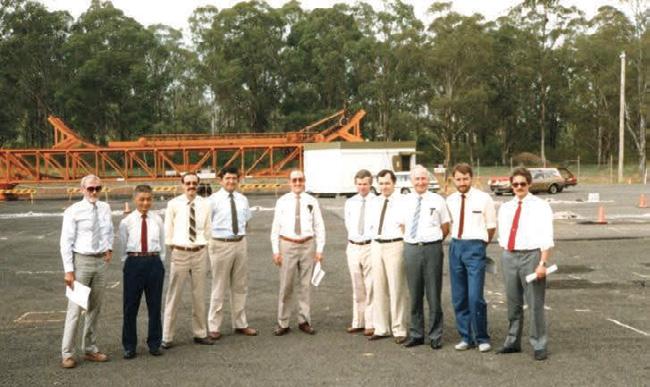
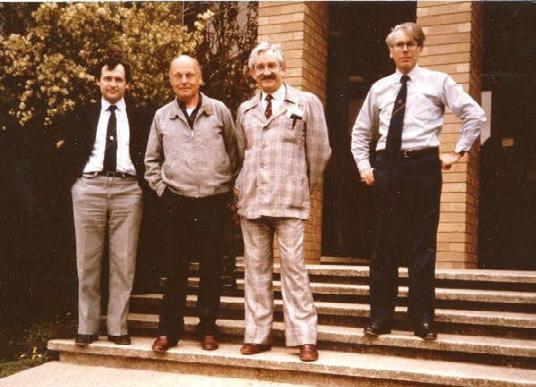
DAVID BENNETT
John and I were contemporary PhD candidates at the University of Melbourne, he being awarded his doctorate in 1972, in mechanical engineering, whereas my graduation was in December 1971, in civil engineering. Although we were both researching transport -related topics, we did not see a lot of each other over this period, as 18 months of my candidacy was spent at Massachusetts Institute of Technology in Boston, USA. However, we were aware of each other’s research interests and our paths crossed fairly often, at the University and at State Road Authority and ARRB events. From 1974 to 1989, whi le I was Head of the Transport Section of the Department of Civil Engineering at the University of Melbourne, I had regular interaction with ARRB at conferences, serving on ARRB research program committees and, particularly, receiving assistance from ARRB staff in facilitating postgraduate students’ research projects, through access to advice and to technical equipment.
John was one of those always willing to offer this assistance. In 1991, the company in which I was a partner, BTA Consulting, was selected by ARRB to undertake an economic evaluation of the benefits derived from the ARRB Accelerated Loading Facility (ALF) program, which John had initiated in the early 19 80s, examining in detail six of the major projects undertaken with ALF over the previous decade and a half. The final report of this commission (April 1992) reported that, restricting consideration to purely economic factors, each project produced a benefit/cost ratio greater than 1 and the overall benefit/cost ratio of all six projects was between 4 and 5. In addition, a number of significant but unquantifiable benefits were identified, further emphasising the value of the program which John had the primary responsibility for introducing. I joined ARRB in late 1992, the beginning a 14 -year period in which I had much more contact with John as a staff colleague until his retirement in 2000, and in his role as a consultant to ARRB thereafter, until my retirement at the end of 2006.


While we rarely worked together on the same project, we had many interactions professionally and socially. I have always regarded John as one of the most intelligent and astute colleagues with whom it has been my good fortune to interact, a man of dry humo ur and a good friend.
David Bennett
John has been for me a great colleague, a mentor and a good fr iend! I thoroughly enjoyed our time working together and the privilege of contributing and continuing some of his pioneering research work
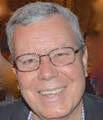
I enjoyed even more our private conversations and debates regarding the ‘big picture transport issues’ and the strategic placement of ARRB as a respected research organisation in Australia and Internationally.
Please pass on to Robyn and John’s children my best wishes and prayers for John’s welfare. Dimitris Tsolakis
On a lovely autumn day in late April 1975, I flew down in the morning from Sydney for a job interview at ARRB in Vermont South. John was a member on the interview panel. The successful candidate was to join the Traffic Engineering Team. John told me later that he was being interviewed himself in that same afternoon for the Team Leader job! We were obviously both successful and John gave me the computer simulation of rural roads as my first project.
In a year or two, staff changes resulted in my transfer to another team. It became obvious to me in early years that road transport research often required the researcher to be multi -skilled and flexible. John gave a great example of flexibility – rural road operations, the Accelerated Loading Facility, asset management, freight, evaluation ... , and he was really successful in each area.
I must have learnt from him because I had worked in quite a few areas before moving back into John's team at ARRB by the 1990s. The team was then called Travel Demand and Congestion Management (see brochure on next page). The brochure was produced for marketing purposes because ARRB by then was under pressure to become commercial.
The pressure was too much for many and I resigned and worked in Singapore for almost five years. When I returned to ARRB in mid -2002, John had retired from ARRB.
Thanks to Kieran Sharp, my first project back at ARRB after the break in Singapore was on something new to me. Fortunately, he mentioned that Dr McLean would be kind enough to provide the necessary consulting expertise, even though, technically, I was the project leader and could tell John what to do. The project was on the classification of roads into different types according to the possible accessibility of different truck types. It is a bit difficult to tell John what to do if you do not know anything a bout how the tail of a B -double swings! At the end of the project, John did politely say to me that it was a pleasure to work with me again. John was rather patient with me even though he stood no fools. John and Robyn were also generous. My wife still remembers their then Blackburn home, and kept saying they had a lovely corner looking out to some parkland.

When I retired from ARRB in August 2015, John was kind enough to attend my farewell party John was a good friend and mentor to me for more than 30 years. May you live long and each new day is a happy day.


John knew all my work on two- lane highways when we first met in the 1970s at TRB. I was at UC Berkley a few years before John (1977/78) so I didn't meet him then.
At TRB in 1984 he gave us a detailed description of how Australia II won the Americas Cup (after 132 year of dominance) over a few beers. I came to Australia on secondment from the University of Calgary in 1984 and spent 1984/85 working with John at ARRB. ARRB had a talented, dedicated staff and a great work environment.
John has made many contributions to the science and engineering of two-lane highways. Speed Environment was a major contribution. In addition to John’s publications that are still referred to today , I also note the following: ‘Review of the Development of US roadside design standards ’, by John McLean: Roads and Transport Research Vol 11 No. 2 , June 2002 In my opinion this is the most complete summary of the development of Clear Zone s It is one of my references and handouts at the course I teach at the University of Auckland.
John was keynote speaker at the Opening Plenary Session at the first International Symposium on Highway Geometric Design. Since then it has been held every 5 years in countries around the world.
John always acknowledged people who encouraged him and sources of materials for his publications .
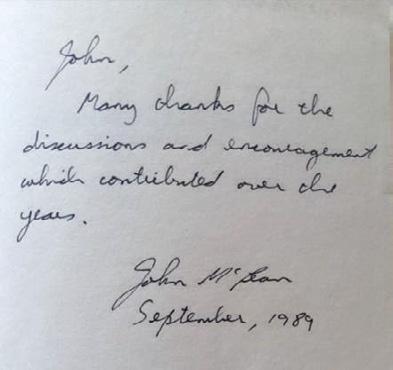
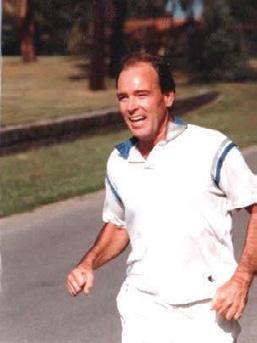
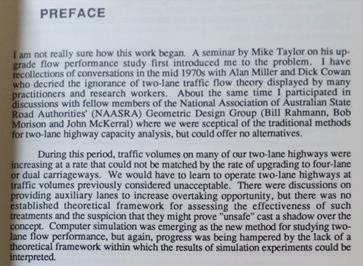
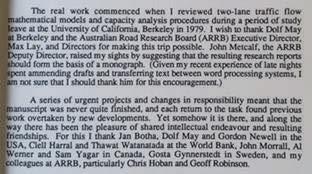
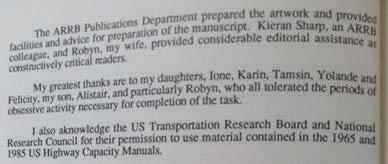
In terms of the social life, I enjoyed playing tennis at ARRB at noon if I didn’t go for a run and after work sometimes if I didn’t go golfing with Al an Ross On weekends I climbed over the fence and played tennis with my son or a friend. I recall Max Lay had the gates closed so staff wouldn’t come in to the office to work. John always had a bottle of wine to share at the ARRB BBQ on stand-down day. I have fond memories of golfing with Kieran, Alan Ross and a few others after work and having a few beers. In 1984, I took part in the ‘Big A’, a 2-mile race that was held every year inside the ARRB property. John, who had been a champion schoolboy athlete, beat me. Robyn also regularly beat me at squash. Those were great times.
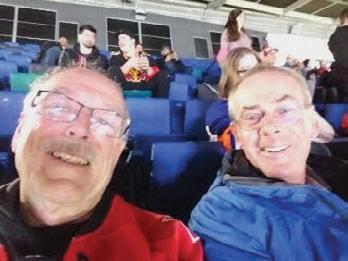
“I took Al to a hockey game when he was visiting me I told him fights were a thing of the past. Sure enough, there were some major fights that night. ”
John had a sign in his office that said : NO
is the hardest word for me to say But
I am learning how
MARY LYDON

I’ve tried to think of some stories but none come to mind. I would just like to say – John is one of the most intelligent people I’ve ever known with an incredibly quick mind and range of knowledge. I remember him as being very generous with his knowledge and also very kind to a new graduate who had no idea what she was doing.
Mary Lydon
CHRIS KONIDITSIOTIS
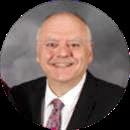
I joined ARRB in late 1985 as a graduate. To me, John was an awesome figure; he had all the answers. There are a few standouts: I would deliberately walk past his office on the way to or from the library and look in to see if he was there and if he was deep in thought or relatively free. This would allow me to stick my head in for a word. I would ask him about work or even a contemporary issue, and he always had a considered view. I was amazed at his personal ‘compendium card system’. He would turn his chair, flick through several cards, give me the latest paper or researcher reference, and on the same card, his handwritten notes. I mean, how good is this! Who needs a librarian? John gave you all and a good story as well!
Chris Koniditsiotis
JAN BROWNRIDGE
Often looking back to ARRB days in the Transport Work Area1, West Wing, working as your Secretary John, I remember a weekend when you had been canoeing down rapids and had a very bad accident causing you to dislocate your shoulder, and which required you to walk out of a wilderness area without a soul to assist you to find help! (I also believe your canoe was rescued by someone later.) You were away from work for some time recuperating. Being the annoying organised person I was – still am – I decided I would bring some order into your office whilst you were out of action. I set up ‘Attention Required’; ‘Work in Progress’; and ‘Filing Required’ baskets – clearly labelled so that, having straightened out your office and also attending t o other tasks, you would come back to find your office all ship -shape, with even pens and pencils all sharpened, paper clips, note pads , etc. all tidy in trays. I don’t think you were pleased!
I have often thought about this and now say “Sorry John, for tidying your office as I probably put your work program back weeks because it was not the way you left it!!!”
By the way John, you were much admired for the way you recovered from your dislocated shoulder as you recovered without surgery and just doggedly exercised as you were instructed.
Jan Brownridge
1 KGS note: At that time, there were Work Areas and Study Areas , with Transport being one of the Work Areas (or was it one of the Study Areas?) . Work Area Meetings were called WAMs and Study Area Meetings were called SAMs. I cannot remember if the Study Areas reported to the Work Areas, or the Work Areas reported to the Study Areas. No one else probably remembers either! Doesn’t matter!
I have a few memories working with John. John enjoyed Henry Lawson and did not take much pushing to recite with passion the Bastard from the Bush at the Truckin’ and Pickin’ BBQs.
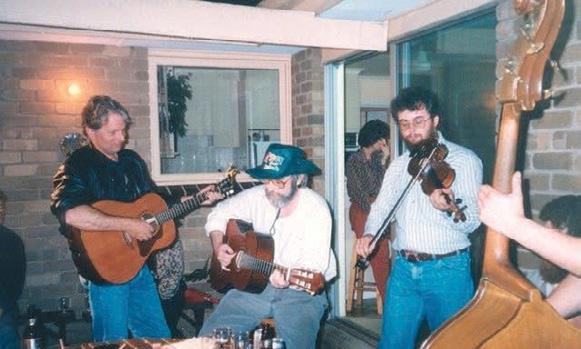
Sweato, Dim, Nick Dear: Truckin’ and Pickin’ BBQ at Uncle Rod’s
John had many attributes that contributed to his working life persona – one attribute that I admired was that he had time for people irrespective of their position or status and when asked for advice it was always relevant and sound.
John reviewed one of my first reports and I clearly recall his main comment was that there need ed to be more ‘Sign Posts’, meaning that there could be more sub headings – something I have always taken cognizance of.


I know that John and Barry Tritt didn’t often see eye -to-eye (KGS: Ya reckon?!) I had lunch with Jim Jarvis last year and he mentioned confrontations with John at the management group meetings, with the polarisation of the Briggs-Myers personality traits suggested as the reason (Jim expands on this further later).
Rod George
Footnote: The original Electronics group had became the Instrumentation group by the time Barry Tritt joined ARRB in 1974. By the time Barry left ARRB in 1990, the group was called Engineering Services. Since then, it has been named Engineering and Business Services , Applied Technologies (when it was united with the Data Collection group), the Applications Division (when it was separated from the Data Collection group), ARRB Technology and, by 2010, the Systems Group (reunited with the Data Collection group). This ul timately led to the establishment of ARRB’s data collection services which is now, financially at least, one of the backbones of ARRB from a revenue standpoint (Edited extract from the ARRB ’50 Year’ book. )


John at the end of the Big A, late 1970s
I owe my professional life at ARRB to John because he employed me to work with ARRB in an area I had little experience in and took a risk taking me on. It was 1990, when unemployment in Australia was around 11% and I had recently taken a voluntary redundan cy package from the State Electricity Commission of Victoria (SECV) to pay out the mortgage that was borrowed at 18% interest! Prior to being interviewed by John, I did attend job interviews with several engineering consultants but didn’t gain any employme nt because they just didn’t have enough ongoing work.
John was always accessible and available to help me get going in my role at ARRB. His guidance was patient, gentle and wise, allowing me to make my way after consultation with him. Also, he was always ready for a chat about activities other than work as he had been a member of the Melbourne University Mountaineering Club (MUMC) where he engaged in rock climbing on weekends at the Grampians. He had many hair-raising stories about the various climbs he had undertaken while completing his PhD at Melbourne University. Often the journey just getting to the Grampians was fraught in his second -hand Volkswagen Beetle (late 1950s model?) which occasionally had various mechanical failures on the way. Fortunately, being a ’hands on’ mechanical engineer he was usually a ble to retrieve the situation. John was also an enthusiastic canoeist for many years. At one stage , and as already noted by Jan Brownridge, he sustained an injury that might have made a less committed canoeist give the sport away. However, he worked hard to overcome his injury to come back to the sport after his recovery period fully fit and ready to resume canoeing where he had left off.
In my early days at ARRB I was fortunate to have just one major project that was well funded and supported by the client, Austroads: a rather unique situation by today’s standards. After four years the project was largely completed so I was able to publish reports and was in a good position to write papers for journals and conferences. In 1995 I was granted the opportunity by John to present a paper at the University of Michigan Transportation Research Institute (UMTRI) at Ann Arbor. At around the same time my wife was planning a sabbatical at Auckland University, so John allowed me to join her and our two young children in Auckland to write papers and presentations on the major research work I had just completed for the 3 months we were in Auckland. Near th e end of my wife’s sabbatical, I was able to travel to UMTRI to present a paper on some of the research. Such a privilege and display of generosity I would not be so likely to see these days at the current ARRB. John was also very aware of UMTRI’s reputati on and status regarding its connection to the project work I had completed.
It was always a great pleasure to talk to John about any topic. John was a smoker most of time (KGS: all of the time) he and I worked together. Our talks would usually take us outside where he was free to smoke . He had the curious habit of leaving his cigarette in the gap of a brick course if he had to dash back inside to answer the phone in the days before mobile phones. He would return and relocate his cigarette and resume smoking!
In the late 1970s John worked at the World Bank in Washington on major international projects sharing his expertise with his peers. While in Washington he attended and presented a paper at the Transport Research Board’s (TRB) annual meeting. The TRB meeting was always held in January, usually a very cold time of the year in the US. Americans at confere nces have a fondness for spirits and I believe John had imbibed a reasonable quantity one evening after one of the days of the meeting. He set off to walk bac k to his hotel and had to be turned a full 180 degrees in the opposite direction. It was just as well otherwise he might have got lost and perished in very unforgiving weather. John was very grateful to the kind souls who pointed him in the right direction!
John was the author of a seminal monograph, Two-Lane Highway Traffic Operations covering driver behaviour and rural road geometry that laid the foundations of rural road geometric design practice in Australia. He had completed this work well before I joined ARRB. Amusingly , there was another engineer in this field by the name of Jack McLean. Apparently, both John and Jack knew each other, and they were quite happy for each other to accept accolades and credits for their combined published work!
John often talked about his family as he has had two lots of children, a total of six in all. He recalled the arrival of the triplets (all girls) and how exhausting it was in their early years. I remember John telling me that feeding the three of them was a continual process as once they were all fed the first child that was fed would wake up and the whole process would begin again.
John was also involved in the development of the Accelerated Loading Facility (ALF), an innovative device for applying a life’s worth of traffic loading on a section of road in just several months by rapid continuous application of the loading. The ALF was designed and manufactured by the Department of Main Roads New South Wales and I understand that John assisted in the final design and construction of ALF in the early 1980s.
John had an irascible and quirky sense of humour probably further refined by experiencing satirical comedies from the Goons on the radio and later Monty Python’s Flying Circus on television. On one occasion John and I attended an Austroads Reference Group meeting managing multiple projects held in Sydney, curiously in the Sydney Masonic Centre, which at the time was a bit ‘down at heel’. I suspect it was probably used because it was such a cheap venue. During one of the meetings John and I were both getting harangued for slow progress on a few projects by several stern members of the Reference Group and we were feeling very oppressed – as you would under these circumstances. In a quiet moment during the meeting I whispered to John, “I wonder where they keep the goat?” John could barely contain his mirth with his muffled giggling. It was a great antidote to the berating we were receiving at the time.

After John retired from ARRB in 2000 he did some consulting work and lecturing in his field of expertise as a sole trader. I managed to get him to join me in proposals for some successful consulting projects and to come along for interviews with potential clients. I remember him saying “it will be good for me to put on a suit and go to a meeting”. He was always very generous with his knowledge and time and a pleasure to work with in the consulting work we did together.
Tim Martin
After Max, for an interview in London, John was the second person from ARRB I met. On arrival at Melbourne Airport a hairy, duffle -coated man approached me and said he had been sent to welcome me to Australia, and was there anything he could do to help. I told him we had been met by my brother -in-law and family and all was in hand. John looked extremely relieved and left with a friendly wave.
I had a pretty prickly relationship with John. He had me down as a lightweight blowhard, and not a real engineer at all (now, now, be nice). This all came to a head when we both ended up on the ARRB Management Group under Ian Johnston. So much so, that Ian brought in a management consultant who used Myers-Briggs analysis. After testing , I announced myself as an ENFP and when it got to John he was an ISTJ. The consultant interjected with ”Oh well, I don’t suppose you get on with Jim very well, he is your complete opposite!” You could have heard a pin drop in the room. However , it proved to be a turning point in our relationship. John accepted that enthusiasm and thinking outside the box could contribute to ARRB’s development and I learned not to jump in and interrupt when John was putting forward a well - reasoned argument, something which apparently really annoyed him. So all’s better that ends better, if not completely well.

Jim Jarvis
ENFP Jim – “We must get one of these (expensive) newfangled whiteboards where you can copy and capture all the ideas and their relationships”
ISTJ John – “What an absolute waste of bloody money – I have a perfectly good copy method in front of me, a pad and a pen!!”
Jim’s story about the Myers -Briggs episode was the one I would have passed on, but I didn’t have the details. I am a M -B INFP, which may explain why I got on so well with Jim and understood John.
John had been at Ringwood High when I was having modest success at the Divisional High Schools athletics with Nuna HS. He was kind enough to remember it. I was interested in his stories of canoeing (or was it kayaking?) and rock climbing, two sports I, bei ng more risk averse, was not attracted to.
My other memory of John was the chaos of his desk because he was doing so many things at once. He must have received advice about time management, because, for a time, he had a note up on the wall in front of him saying LEARN TO SAY NO 2 This didn’t stop him from being shoe-horned into managing a team in the pavements area. (I forget the details – you may remember, Kieran. KGS: The ALF program, Ray). Maybe it was one of those offers that could not be refused, which was the fate of many of us at that time.
Was it John who used to go for a wander outside when his mind needed clearing? (Kieran: Yes , though there were quite a few). “Thinking is research” was the philosophy I learned.
I remember another typical John episode. One Christmas, back when the event was fun and staff performed a few party pieces, John announced that there were people sneaking up the back stairs to the executive floor to get the ear of Max or John. He then prod uced some small plastic bags and said that these were pocket liners to be used when people wanted to piss in the pockets of the bosses. I guess there was a story behind that.
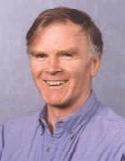
The only joint work that I recall with John was a paper he invited me to co -author on the subject ‘Reducing road travel demand and greenhouse emissions’, for the 1991 Greenhouse Conference. It was a surprisingly painless experience, as I recall. The paper sank like a stone, of course. Most of them do.
Ray Brindle
MARC WIGAN
Responded with a tinge of guilt!
I promised to cover the long impact work on family time travel activities and data that my little group initiated in the 1970s and is still being quoted and cited today
I can only say that rehab from two knee rebuilds plus the hermit life imposed by Covid have compressed my discretionary time massively.
I didn’t have much of a relationship with John , who never really engaged with me so I have little to add in that regard. However, I have quite a large database of scanned prints and slides(30 Gb) which I will now scan through and see if I have any of John and send them to you if I do: at this point I c an’t remember any but I will look. I’ve been pressed to give colloquia and papers to various overseas organisations which hasn’t helped.

Marc Wigan
I am always sad to hear of yet another contemporary fading into dementia, struck down by cancer, or dying. Every one makes me work harder to do my best to add what I can from whatever skills and capacities I still have for the general good (not that that has ever changed) in whatever time I have left. I’m glad that John is getting this support in the late evening of his life and applaud your efforts.
THOROLF THORESEN
I believe he attended Box Hill High (KGS: it was Ringwood High), from which he went to Melbourne Uni from which he graduate d PhD in Mech Eng. I imagine he was a Commonwealth Scholarship or higher lad (KGS: I imagine so, too).
2 Ray is not the only one to mention this sign, albeit with the wording sometimes a little different.
Inspiring teacher:
John recounted the case of his maths teacher in year 12, Mr Firth, a science teacher who had not previously taught this course or had time to fully prepare for it. ‘Firthy’ made this clear to the class, and together he and they worked co-operatively through the course. When difficulties were encountered students were invited to suggest and demonstrate solutions. Resulting class enthusiasm and involvement was palpable. My teacher mates tell me this was an inspired and innovative approach. John sometimes employed variations of this at ARRB.
Science to engineering:
John recounted how he enrolled in first year science at Melbourne Uni rather than engineering, transferring to the latter in year two. Subsequently he worked out what was important in syllabuses, and what was not, by comparing how different faculties taught the same subjects, particularly in relation to ‘ pracs ’ and tutorials.
The latter could be a waste of time and energy. Based on this , he avoided/minimised such low -value activities in an overcrowded engineering curriculum and concentrated on those which contributed to the best final results. Freed time was also available for extra curricular activities. He (tongue-in-cheek?) attributed not getting the highest marks on graduation to faculty resentment of this tactic. Undertaking postgraduate studies helped to form a good ongoing relationship with Prof. Joubert whose inductive, exploratory engineering for knowledge sake, not f or dollars or a rules-based life, appears to have had an impact (KGS: just a tad).
Great outdoors: Athletics and Fritz ( KGS: try Franz!) Stampfl, etc. :
John’s outdoors persona is demonstrated by a variety of interests including athletics, rock climbing, canoeing, and less often bushwalking and surfing. He also has a native fauna/flora conservation interest, demonstrably at a local level.
John was no study nerd, getting involved in a range of outdoors physical activities. He continued his interest in middle distance running (KGS: he was State schoolboy champion in the 1 mile) by training at Melbourne University where he met many of the coaching staff and actual, or soon to be, athletic luminaries. I recall he even attended Percy Cerutty’s camp at Portsea. Impressive given that, as a lad, he wore corrective braces on his legs. Refusal to accept physical limits repeats when he rehabs himself f ollowing a kayaking injury caused by a ‘high brace’ move gone wrong. Some medics advised he would be unlikely to fully recover…..
Melbourne University Mountaineering Club (MUMC):
MUMC is a long-established club founded in the 1940s. Activities officially include bushwalking, rock climbing, and snow and ice climbing. You need to excel to be noticed. MUMC was not a boys club.
John related once how he was initially attracted to climbing because, being an outside activity, he saw climbers as more alive, raucous and action prone than their more conservative bushwalking colleagues. John’s arrival coincided with the ‘discovery’ of Mount Arapiles which became the climbing Mecca of Victoria, and featured strongly in his climbing record. Previously Victorian sites had been limited primarily to Sugarloaf and the Jawbones (Cathedral ranges) Ros ea, Hanging Rock and for those who knew, the Organ Pipes.
Overseas climbing literature lists ‘The Bard’ and ‘D Minor’ as two of the most iconic climbs at Arapiles. John and Ian(?) Speedie put up a first ascent of the latter. John’s career nearly ended at Arapiles when hit on the head by a falling dislodged rock. He and his mates were climbing ‘Alpinismus’ that day, in honour of the German climbing magazine of that name. John was wearing a motorcycle helmet which took most of the impact.
Volkswagen Beatles and the Pentland hills:
At some stage John had a ‘Volxie’. The airfoil-like longitudinal section of Vol xies – plus the swing axles, etc. in high winds and challenging alignment – could result in sudden handling issues. John noted that the Pentland Hills on the way to Arapiles were a prime location for this, plus some of the straights on flat country Incidentally, Mech Engies were partial to Volx ies due to their long distance cruising abilities, ruggedness, unsealed and off -road performance, and unique Porsche design.
A potted series of events.
Vermont South – interesting times: Des Glynn, (Black Mike) Patterson, Dorothy Ratnaraja , etc. (negative); John Metcalf (positive, a continuing element and guiding light). John survive s the Metcalf interview (a scare test) subject to completing PhD
John’s research and publications – initially driver behaviour and road geometry. Finishes PhD
Other key ARRB endeavours (RORVL, human computer ( Laszlo Foldvary – managed by David Potter ), Jack Scala, A rtie Tynan, Jim Bryant, Roughness Trailer, Human Factors dual steering wheel Ford Fairlane, and the vision visor.
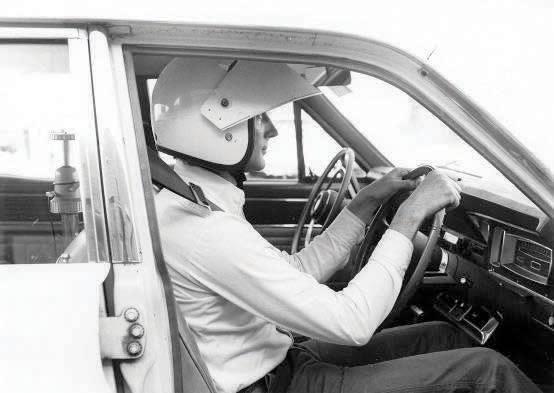
Next generation of ARRB: the new broom
Max Lay, Alan Stirling and John Metcalf favour support, not stifling control Multiplication of research directions matching NAASRA interests and indirect influence of Commonwealth Bureau of Roads and changed road funding issues. The ‘Pomestry ’ and Australian research refugees primarily on the soft side and not the hard side of ARRB .
Darrell Bowyer, Peter Dumble, Jim Jarvis, Mary Armour, Bill Rawlinson, John Oliver, Peter Morris, Geoff Robinson, Kieran Sharp, etc.
John adapts and includes : he doesn’t boundary ride area s of expertise or (partially) ignore s/withdraws like some incumbents. Critically adopts a collegiate as opposed to a competitive attitude to staff. [Doesn’t abide fools and game players gladly .] Good working relationship with Dr Geoff Robinson 3 plus guidance and advice, combined with an interest in passing lanes as a means of resolving rural road congestion results in TRAAR. Subsequently very highly valued by NAASRA and recognised overseas.
Vital non-research role played by servicing and encouraging advisory groups, actively staying on -side with road and transport equivalents and other backers, continued active local/overseas conference contributor, international links, influences, contact s and publications. Max competes with staff, the Source/Sauce Book, soft push back. [KGS: I’ll try to remember to attach a copy of the Sauce Book to the file.]
ARRB
The new road agency CEO’s, Bernard Fisk and IFX (Ian Francis Xavier) Stoney, main influencers. Want contract-based work, tighter control of workforce, targeting of research, competition with external bodies, etc.
Interregnum: Max’s move to the CRB in a swap with Peter Lowe ; WAMS, SAMs, etc.; Form 7’s; the Swahili incident; Peter Lowe a quiet achiever

The new order with Ian Johnston as CEO stages 1 and 2. The diplomat then the clique. As protege of Halton, Commonwealth Dept of Transport, Ian has inside running for top job. Political talents used to get Stoney/Fisk onside
The Joy Boys, going round and round: delivering services not selling equipment; The Dispora. Prophet and profit.
Thorolf Thoresen
3 KGS: I didn’t have any contact details for Geoff Robinson.

When I came to ARRB for an interview in mid -1995, I was met by John, Tim Martin and Thorolf Thoresen. John said “let's first go out for lunch” , which we did, at the restaurant he was married in with Robyn in Nunawading. We had an enjoyable lunch and wide -ranging conversation. We got back to the West Wing, and I asked John when the interview was to be conducted. His reply was, "that was it, you are hired ."
PETER MILNE
There are three comments I would make about John:
1. What an intellect he has. Whenever I had a query in that area, I knew I could consult with him and get an immediate well-informed answer. He was a font of wisdom.
2. If I had to walk from my office to the front of the building, I often encountered John outside having a cigarette at what became known in my mind as McLean Corner. Uttering the magic words ‘canoeing’ or ‘Snowy River’ or ‘water levels’ would usually lead to 20 minutes of enthusiastic description of his lates t or next river trip. We might only then get round to talking about a work -related issue.
3. Many a Friday night after work was spent in John’s company with a bottle of wine. Conversation was always stimulating and wide ranging as we attempted to solve the world’s problems.
Sorry I don’t have any pics. There were many in the shoe boxes that John Best’s area used to keep. Sadly , I don’t think they were rescued when ARRB left Vermont South (KGS: maybe they’re still lying around somewhere along with Geoff Jameson’s poster)
Peter Milne
John was my first boss when I joined ARRB back in June 1990. I was recruited to work with Ross Hannay and the profilometer after Hans Prem had left. We were part of Transport Efficiency (TE) in those days which John headed. I still remember John’s office in the West Wing with the haze of cigarette smoke hanging in the air and an ashtray full of cigarette butts. It certainly was different back then.
John was a great teacher with a wealth of information and experience, and he was always happy to share it with you. Thanks to John I even had the fastest PC at ARRB at one time 4. It had a 386 processor and a whole 158 MB of storage which I used to process data from the profilometer. It was John who introduced me to power spectral density plots, which I’m still using to analyse longitudinal pavement profiles over 30 years’ later. I also have fond memories of being invited to John’s place on one occasion for a BBQ/meal with some other colleagues early on in my career at ARRB. There’s nothing like a bit of team building, especially when your young and newish to the organisation.
After a couple of years in TE, Ross and I and the profilometer eventually found ourselves as part of Engineering Services. I remember it was Jan Brownridge who broke the news to us. However, that opened up a whole new door of activity, ultimately leading t o the establishment of ARRB’s data collection services which is now, financially at least, the backbone of ARRB/NTRO from a revenue standpoint.
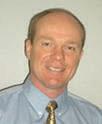
I still remember John’s retirement speech, which included a summary of several of the projects he had worked on over the years (via PowerPoint if my memory serves me correctly), which I thought would be a good thing to do when I retired . When I wished him well he told me to ‘keep on running those profilers’.
Richard Wix
4 KGS: John is famous in the organisation as the first recipient of a PC, an XT. It did not have a hard drive but, rather, 2 x 5¼ inch floppy disc drives. One disc, with Microsoft Word loaded onto it, was inserted in one of the drive s, and a blank disc in the other. A Word file was then created and saved onto the disc Everyone was very jealous.
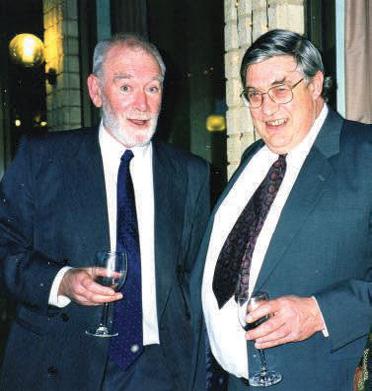
John with David Potter: Helen and Kieran’s wedding, 9/9/1999
I always liked John and I enjoyed his forthright views on management and other ills in society when holding forth at an ARRB BBQ or after work discussion. (I am not sure if his encounters with management had some similarity to my own, as I became more knowledgeable on OHS and legal requirements, not something that was always welcomed by management. )

I recall Peter Sweatman discussing Prof Joubert, and I think John was involved. My recollection is that, as Peter moved away from Melb ourne Uni, Joubert had another cohort of younger students working on the aerodynamics and performance of yachts. I had the feeling that this advanced knowledge was not for the betterment of Australian yachting but rather to allow Joubert to travel faster in the wate r. Not sure if I’m right or not there (KGS: I can confirm that Joubert participated in several Sydney to Hobart yacht races.)
If John directed staff to work overnight on ALF, or stay in dodgy accommodation near ALF, he was prepared to share the same conditions with staff.
Brendan Gleeson
JOHN OLIVER

John Oliver
One of my recollections of John McLean concerns him being his own man and sitting his personal attendance times. On this occasion, Des Glynn had called a meeting of all staff in the canteen at 10 in the morning. In the middle of the meeting the door to the canteen from the car park opened and in came John with his briefcase. He took a look at the assembled company then, as was his wa nt, ambled over to the tea urn, poured himself a cup of tea and then strolled off with it to his office.
Whilst I have worked on several ALF trials over the years, I never worked directly with John because I started at ARRB after Peter Kadar replaced John as the ALF program manager. However, we shared a common interest in cycling. One day, John was walking past my office and he noticed a poster of Miguel Induráin on the wall. He duly came into my office and, after admiring the poster, proceeded to tell me that Miguel was one of the very greats and won the Tour de France five times. We settled into quite a long discussion on cycling, the routes we used and bike -paths in the area. This happened in the era when questions were be ginning to be asked about Lance Armstrong, but details had yet to be revealed.

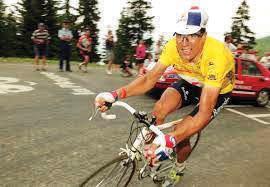
He asked me where I got the poster. I can’t remember what my answer was, but the reality was I had no idea where I got the poster, or even if it was mine . Maybe I ‘inherited’ it when I moved into the office. The fate of the poster remains unknown : perhaps it is lying around (with John Best’s photos) somewhere in the now very decrepit and vandalised building at Vermont South
Geoff Jameson
RICHARD YEO

I had some interactions with John early in my time but this was not very substantial. I was working closely with the likes of Dave Potter, Kieran Sharp and of course Ahmed Auff with a short stint with John Metcalf of course.
Certainly there would be some interesting materials in the ARRB archives – I know we can access staff newsletters through the library and there may be some stories there if we can find the time to do some searching. Richard Yeo
MICHAEL MOFFATT
I joined ARRB, straight from university, at the very start of 1991. John was heading a different department to the one I joined at the time. Nevertheless, I was starstruck when meeting the McLean whose work featured so much in my recent road design uni stu dies.
As I gathered confidence in the workplace, I spoke more and more with John, mostly triggered as we’d bump into each other during smoking breaks. He was universally approachable.
Chatting to John was always great fun. He’d make a quick, rapid -fire statement, often punctuated by a hand wave, followed by a bit of rapid pacing in a circle, a tighter quick twirl on his feet, and then an additional point to make. Sometimes equally rapid , often more drawn out and considered.
I found him extremely generous with his time. He’d engage on any subject: the fundamentals of sight distance in road alignment design; the latest craziness in road agency management; white water adventures; rock climbing; and the vagaries of the human condition.
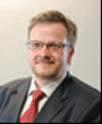
I was appointed ALF Program Manger around the beginning of 2007. I was the fifth ALF manager following John, Peter Kadar, Dim, and Richard Yeo. I had a lot to live up to!
I can’t remember which came first – John retiring or me giving up smoking. Either way I missed the interactions. John’s retirement speech – which was more like John, the Musical Rant , was just as energetic, wide ranging, and at its heart as genuine as his chats with me.
Michael Moffatt
One story I can relate which John will be reading for the first time: John had a chain saw and he was very proud of it and looked after it passionately. In a moment of madness, he allowed me to borrow it for a few days when I was trimming trees around my house. Not being an exp ert in the operation of a chain saw, I proceeded to destroy the motor by over -taxing it. I was devastated and also wondering how the hell I was going to tell John. I decided I wouldn’t tell him but, instead, get the chain saw completely reconditioned. I duly handed it back to him as if everything had gone to plan. Upon inspection, John thanked me for looking after it so well for him!
Another McLean story relates to when he was leading the Pavements team . He was sitting in the double office on the top floor of one of the research wings (R2 to the initiated) . Robyn knows all about double offices: she shared one with John when she worked at ARRB for a short while – and the rest, as they say, is history. Anyway, John shared the office with the divisional secretary, Alison Whyatt, a very friendly, and very efficient, Scottish lady. A new Research Scientist started at ARRB and John had nowher e to put him, so he decided he’d better move him into the shared office with him. That meant he had to find somewhere for Alison. He decided to put her at the end of the passageway near one of the entrances. He organised a desk, chair, computer, and partition so she could have some privacy. Everything was set for the grand opening until it was explained to John that he hadn’t sought, let alone received, approval from management to make the move and spend the money. John was not happy, but he played by the s ystem – and bided his time.
Having filled out all the forms (including Alison signing a form saying she was happy with the move) and gained formal approval from management, one Friday afternoon a few staff gathered around Alison’s brand-new cubicle. A cake was produced, complete with candles, Dave Potter duly officially opened it, and Alison blew out the candles. It took John Metcalf a little while to spy the sign that McLean had affixed to the cubicle – something like this: THIS OFFICE WAS OFFICIALLY OPENED BY HIS EXCELLENT C, DAVID POTTER, ON (whatever the date was). MATERIAL COSTS: $120; ADMINISTRATIVE OVERHEADS: $5,650.
John Metcalf looked at John and smiled; when he smiled in those situations you were usually in trouble, but this time he said nothing. Time bided and point made.
And then there is his passionate support for the VFL/AFL St Kilda football team already referred to. It is probably fitting that John supports a team that has only ever won one premiership since being a foundation member of the VFL in 1897 – in 1966 by 1 point when they beat Collingwood. I am not sure if he was present on this historical day or not but you’d like to think that he was. What is certain is that he would have celebrated long and hard and taken quite some time to fully recover. Teams like St Kilda are very good at ‘snatching defeat out of the jaws of victory’, a nd this has happened many times in the years since the single premiership, including a drawn grand final , which they should have won, and a defeat in the replay the following week (Collingwood got their revenge for 1966).
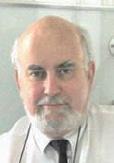
Kieran
Sharp
I went to the footy with John a couple of times – with Peter Sweatman if I remember correctly. Like many passionate supporters, John turned into a raving mani ac once the ball was bounced. Unlike most supporters, however, who normally direct their vitriol at the umpires, John was more inclined to direct his abuse at some of the players in his team, with Grant Thomas, a defender who later coached the team, identified for special attention. Spectators and fellow supporters must have been somewhat bemused when the following unsolicited advice was directed , very loudly, to the coaching panel from the outer, ‘TAKE OFF GRANT THOMAS’. There is no record of the coaching panel ever taking this sage advice.
ROGUES GALLERY: A FEW FACES JOHN WILL RECALL WITH PLEASURE OR CHAGRIN
(photos already shown not included)
Those who are known to be no longer with us are highlighted, whilst the status of some is unknown




























